p h i l l y r e a * a n g u s t i f o l i a
I live in the south of France, you probably already know. I have moved a lot these last ten years, first with the man of my life before we got married, then, along the way, we had two babies, who are now 6 & 8. We travelled a bit around the country, for hubby's work, and in fact, really got settled down, back in our native region (around Montpellier) in July 2009, when we moved for the last time. (please girls, cross your fingers for me that it will be the last time, thanks !!) Since that time, we've decided to explore our local region like we had never done before. In a year & a half (or almost) of living again in the south where we grew up, I (and hubby, and our sons too) have learnt SO much more than what I learnt about the local nature since I was born. I (we) am (are) so happy & proud to learn a bit more every time we go exploring. May it be a specie of butterfly, trees or flowers or any other plant.
the wild areas here are called garrigue, and is a type of low, soft-leaved scrubland found on limestone soils around the Mediterranean Basin, generally near the seacoast, where the climate is ameliorated, but where annual summer drought conditions obtain. (quoting Wikipedia) There are so many plants that we should have known forever as we'd lived here since we were born (except those ten years when we moved around the country) Well, as the end of summer made colorful fruits/drupes in the landscape, we could discover a plant we had never managed to spot, despite the fact that it grows abondantly in the garrigue !!
the plant I'm talking about is called "phillyrea angustifolia". It is a flowering plant from the Oleaceae family, and is in some way, a cousin to the olive tree. (though the fruits/drupes of the phillyrea are not edible for humans) Hubby insisted to gather some (something like 6 big handfuls) and try dyeing with them. I feared that the fact it was from the Oleaceae family would make the dye fail & become greasy & all. But nope. As the dye bath was bubbling, we spied some clues about the final color to expect ... I'll let you watch the photos now. (we only used the drupes/fruits, not the leaves)so ... what do you think about this shade of green ?!! totally unexpected, right ?! This is one of the reasons why I love dyeing with plants so much ... you are always up to the most wonderful surprises !!!
of course the silk took better than the linen or cotton, but it wasn't too bad, I think. What I love best about this experiment, is that it is NOT a plant known for dyeing ! There !!!
the wild areas here are called garrigue, and is a type of low, soft-leaved scrubland found on limestone soils around the Mediterranean Basin, generally near the seacoast, where the climate is ameliorated, but where annual summer drought conditions obtain. (quoting Wikipedia) There are so many plants that we should have known forever as we'd lived here since we were born (except those ten years when we moved around the country) Well, as the end of summer made colorful fruits/drupes in the landscape, we could discover a plant we had never managed to spot, despite the fact that it grows abondantly in the garrigue !!
the plant I'm talking about is called "phillyrea angustifolia". It is a flowering plant from the Oleaceae family, and is in some way, a cousin to the olive tree. (though the fruits/drupes of the phillyrea are not edible for humans) Hubby insisted to gather some (something like 6 big handfuls) and try dyeing with them. I feared that the fact it was from the Oleaceae family would make the dye fail & become greasy & all. But nope. As the dye bath was bubbling, we spied some clues about the final color to expect ... I'll let you watch the photos now. (we only used the drupes/fruits, not the leaves)so ... what do you think about this shade of green ?!! totally unexpected, right ?! This is one of the reasons why I love dyeing with plants so much ... you are always up to the most wonderful surprises !!!
of course the silk took better than the linen or cotton, but it wasn't too bad, I think. What I love best about this experiment, is that it is NOT a plant known for dyeing ! There !!!

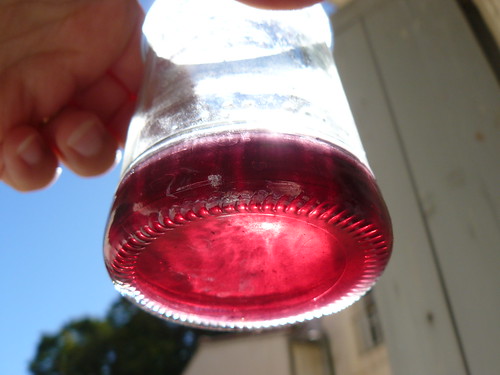
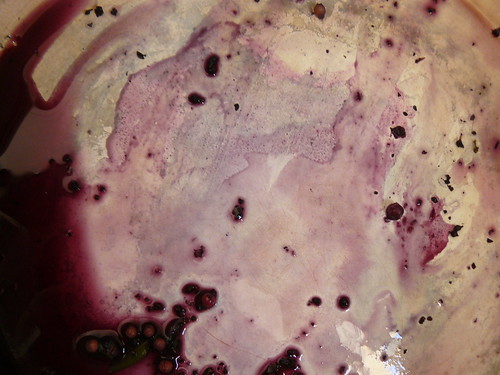

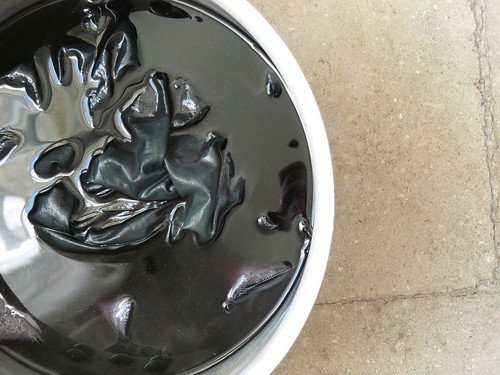
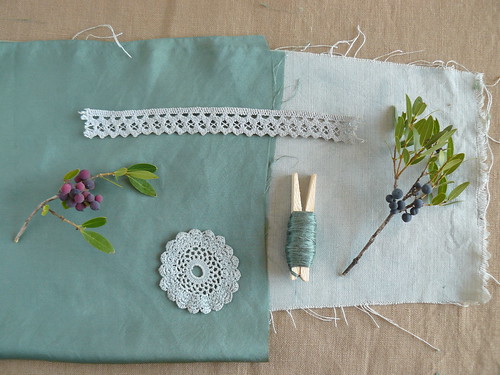
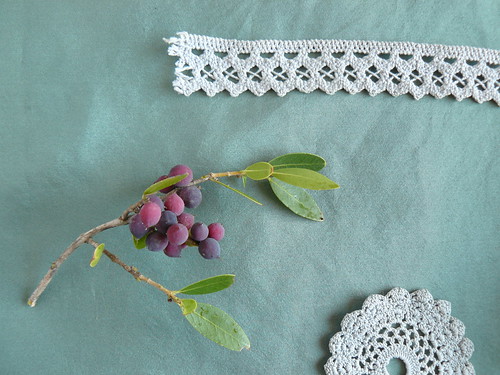


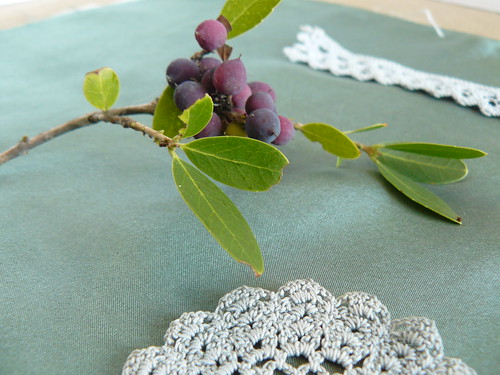
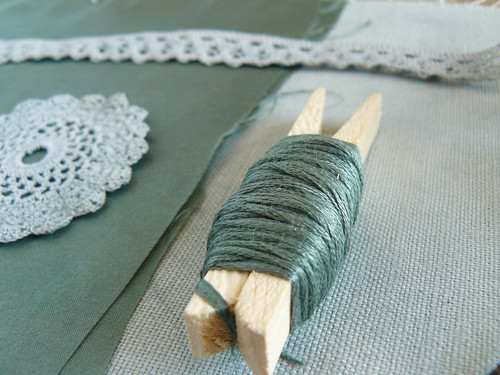
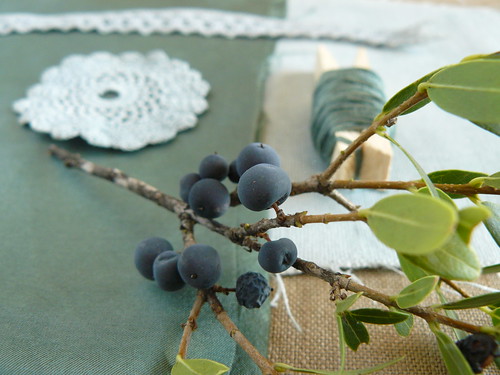
gorgeous color(s)! love your blog.
ReplyDeletethis is my all time absolute favorite
ReplyDeletecan you collect some more of these jewels and freeze them perhaps to dye later.
LOVE!
ReplyDeletethere must be some interesting alkali in your water supply to produce this lovely teal shade...
ReplyDeleteI heard that the fruit contains lots of antioxidants and they might be an interest in clinical studies...Has anyone heard of any such studies.
ReplyDeleteRegards
Foudil